Guest Post by Melissa Sue Stanley
I’ve spent the last couple months locked in my studio, working on an exhibit for a Chicago gallery. Now that I’m done, and it’s up and open, I’ve been happy to be back out enjoying a bit of the summer and BBQ’s and seeing people’s faces again. Chatting with folks, I’ve found the dominating question with my more shop-talky type friends has been:
“How did you get to do this show at this gallery?”
There are long answers and a short answer to this. The shortest, if you don’t want to read any further, is that I’ve been in Chicago a decade and know the gallery owner and participate in the community and I make a lot of stuff. Ta da! The end.
Ok, the longer answers:
It’s a two-part answer. Probably more once I start hitting tangents. Bear with me.
First is the work, and how it got made. I don’t do gallery shows (which is why so many folks are asking me what I’m doing here) but every now and then I get a gut feeling that I’ve arrived at a place where the best way to express my current series is through formal display. This has happened three or four times now, and these shows are little punctuation marks in my portfolio and career.
My main project is the “Woolbeasts”, which I’ve been making and evolving for the past (yikes) 15 years or so. I used to sew them from wool – my last show at Rotofugi was in 2016 with a large group of these felt creatures.
At the time they weren’t yet “Woolbeasts”, they were just “these monster things I make”.
Wool has its limits, and in my heart I’m an illustrator. After that 2016 show I turned to drawing and painting and storytelling. And after a couple great workshops and some portfolio reviews, I started sculpting as well.
At this point I had dropped all group and small-works shows and gallery things, pared way down on craft and convention events, and really just focused on learning to make good beasts.
Actually, a happy turning point came with the Muddy Colors video, Making Monsters, where Justin Gerard demos his scribbly-start approach to finding creature shapes and attitudes. I do this *all* the time now.
The last three or so years has been a repeated cycle:
Doodle & Sketch – Draw & Paint – Story & Sculpt
Repeat.
A lot.
So – the Part One answer is that after a lot of thought and work, I felt ready to share something new: sculptures and stories from my Woolbeast world.
Part Two: I am a Project Manager. That part of my brain is an espresso-fueled hamster that never stops running. While half of my mind is writing a gentle, conflict-free story about what Moss Gardeners do for fun under the starlight, the other brain bits are running scenarios on income, the decline of social media, gantt charts for book production, and five-year plan updates.
And right now, the biggest post-it note stuck to the inside of my skull is: “How are we going to crowdfund a Woolbeast book in a year if audience reach is slowly collapsing like a helium Spongebob Squarepants balloon two days after a birthday party has ended?”
Mmm, problems to solve. LOVE IT.
To start, the above post-it is a big question but it’s not actionable. After a bit of journaling, I’m able to break things down:
Grow the email list
Get more in-person interactions
Do something Big that folks might share or talk about
Smells like an art show to me. Which is great because – as I mentioned above – I’m very excited about my sculptures and the stories I’ve been working on.
Instead of sending a general portfolio and CV to multiple galleries, I sent the owner of Rotofugi Gallery an email explaining that I was working on a show idea that featured art from my in-progress book, along with examples of what I was thinking of doing. I know that my work pairs well with Rotofugi’s market and aesthetic. I like that they are local and that they are 60/40. I also just really love the owner, she’s literally the best. Point is: it was a very specific email that I sent.
Sometimes when I send emails like this I’ll also set up an orphan page on my website – here’s a recent one I put together for a convention application. I try to be as clear as possible about what my goals are, why it’s a good idea, and how it fits specifically with the venue I’m asking about.
The conversation starts with the owner and the show becomes more collaborative. We agree on size and timing, and how things will fit in. I’m making all new work for the show so I’m very open to suggestions and changes to my original layout idea. I approach these things as partnerships and friendships. I’ve seen a lot of shows at Rotofugi in the last ten years. It was almost our wedding venue. We’ve gone to the drink & draw things there. It’s fun!
This is the same process for how I work with breweries (which folks also ask me about a lot): I pick up odd label illustration gigs because I’ve drank a lot of beer with the folks who brew it. Participation is a lot – and genuinely caring about and enjoying is more.
Before my creator-brain takes over, manager-brain has one more thing to do: the spreadsheet.
Before you “Ew, David!” – this is important, I promise. I need to organize thoughts:
I have a general idea of how many sculptures I can physically make in the given time frame, factoring in the rest of life and work going on.
I know that within that time frame, if this is going to be X percentage of my working time then I need to make Y dollars at the end. Bills, y’all.
I know a general plus/minus on what will probably sell, what will definitely sell, and what are more risky price points to shoot for.
I know I need to have Z number of ‘big’ pieces to get the Woolbeast story out there.
My spreadsheet totals up the number of pieces at different amounts and calculates what my estimated take-home will be after the gallery’s cut, and then (importantly) *after taxes*. I calculate this estimate for a sold-out show, a moderate show, and a “bad sales” show – and I make sure I’m comfortable with each amount. I adjust quantities of large and small pieces in the show to get a final number that will cover the life and bills stuff I figured out earlier.
The skeleton of the show is then based on these determined price points and number of pieces, with a general plan of how it will be displayed.
These rough squares are now the blueprint where I’ll assign creatures, story, and all the fun stuff.
While this Project Management and money planning seems like it might drain the whimsy right out of your heart, I think it’s a key step. It doesn’t do the gallery or myself any good to have a show with no plan for sales or promotion. Galleries are businesses, and respecting that (and your own business) is important.
Also, once I have that all out of the way, I can make up for any “icky” feelings by creating wildly self-indulgent things.
The truth is: once the bones are in place, everything becomes love.
And that’s the actual soul of the thing. I might need to do it because it’s my job, and I might want to do it because I’m working on this book and trying to talk about that.
But in the quiet of the studio with just the tools and the creatures and the wool and the clay – I love it. My husband caught me giggling at my table more than once while working on this. There is so much delight in a tiny knit scarf, or watercolor-painted eyeballs, or the single derpy sculpted tooth.
My secret: this whole thing was just an excuse to get lost in this world. To stitch together little backpacks and stuff them full of secret letters. Refine the maps, and learn what the landscape along the coastline looks like. Sculpt tiny loves of bread and hunks of cheese, so the beasts don’t get hangry on their travels.
Some of these things aren’t even actually on display – they’re tucked away in wee bags.
Every creature has a story on display next to them, and a place on “Scout’s Map”.
And that’s why it had to be an exhibit. So you can wander around this world, too.
Grab your bag and pack some snacks: we’re going on an adventure.
Woolbeasts You Might Meet on the Treehouse Trail is on view at Rotofugi Gallery in Chicago through July 30, 2023.





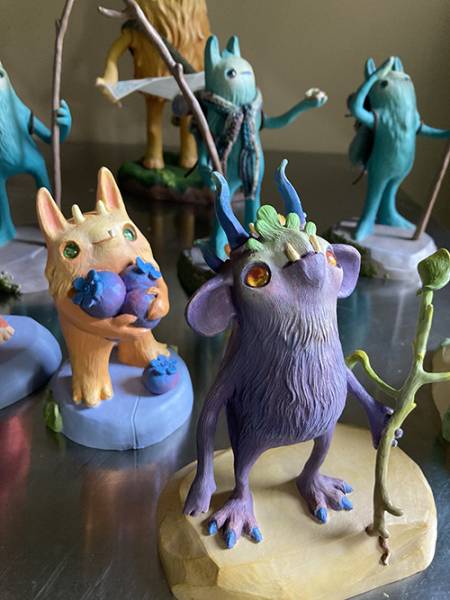



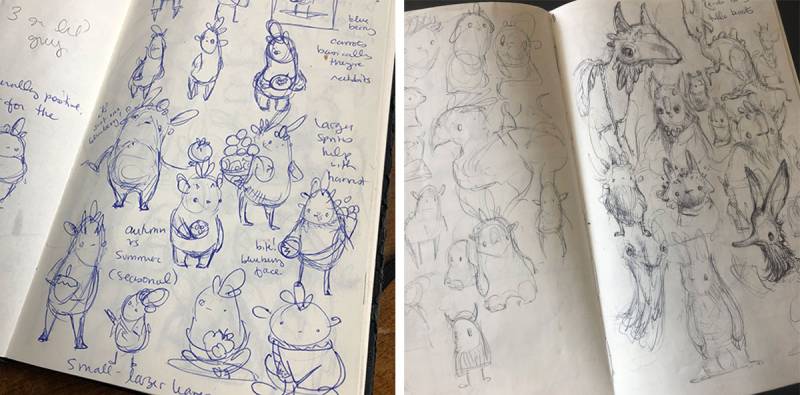
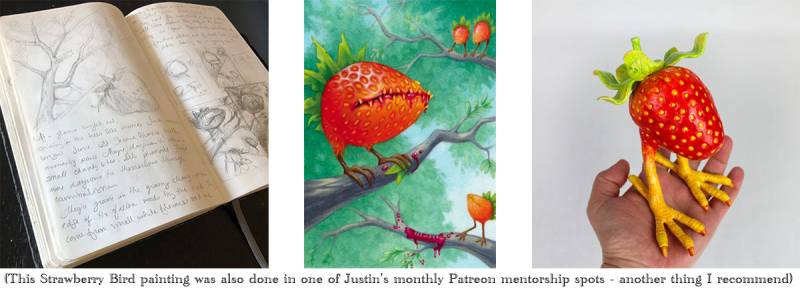




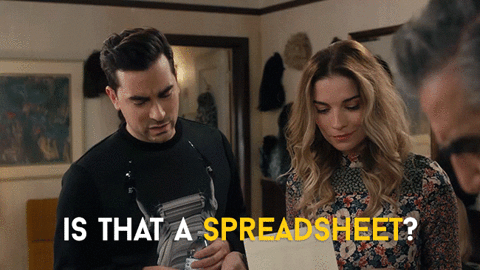

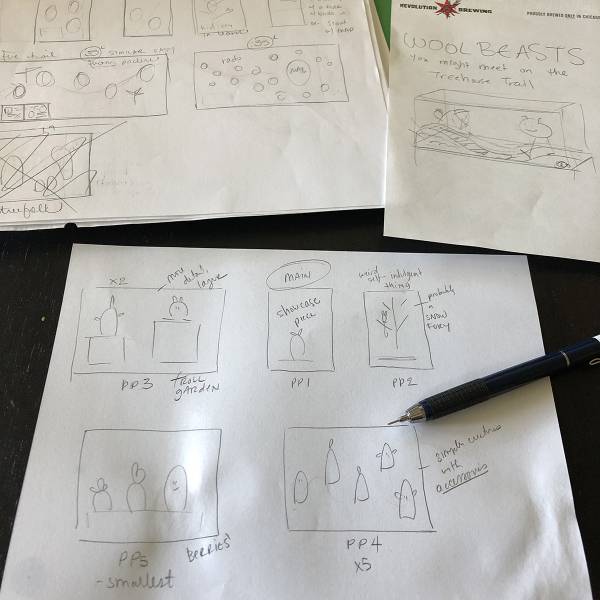

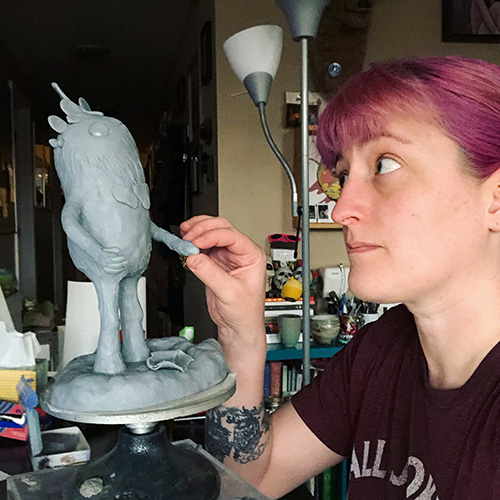
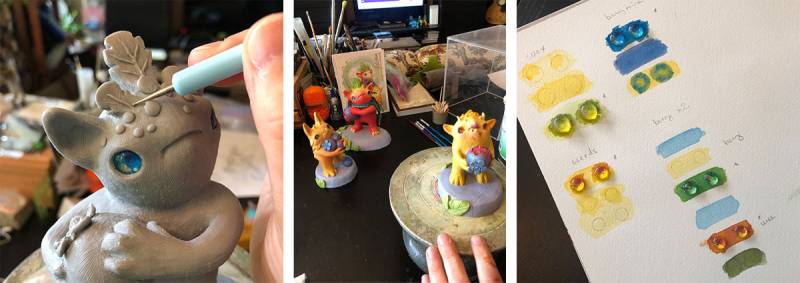

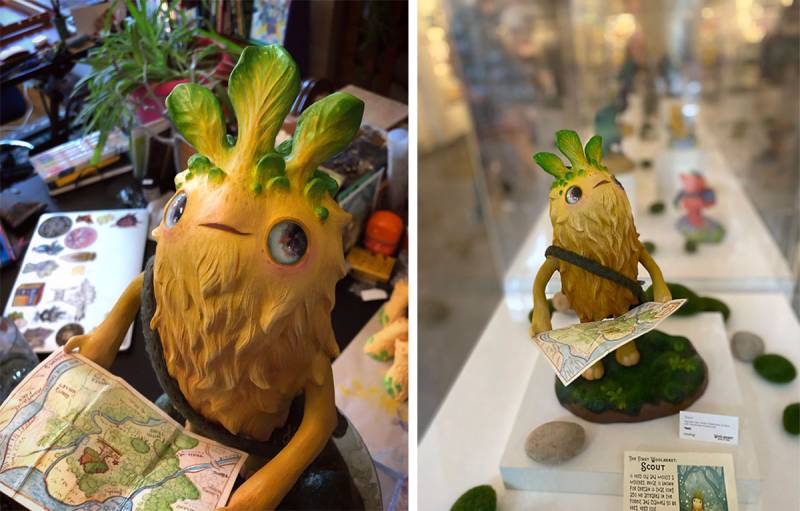
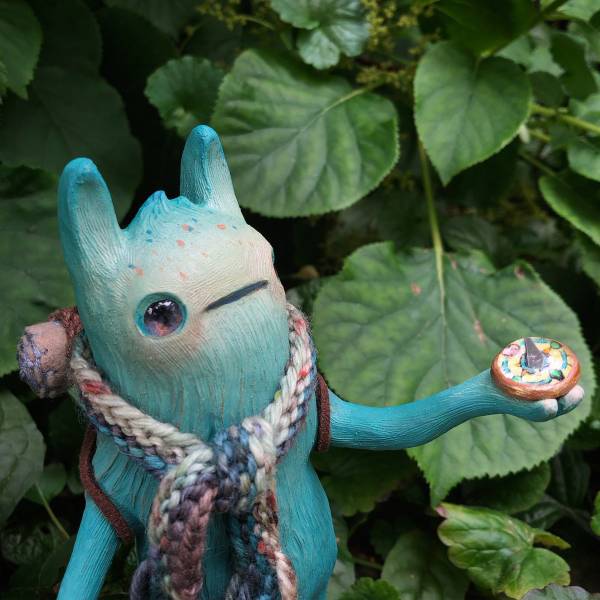
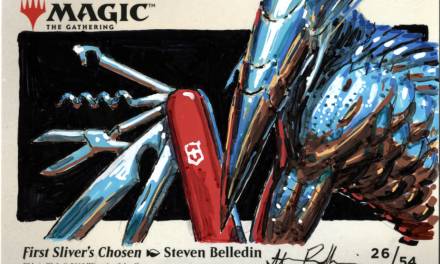
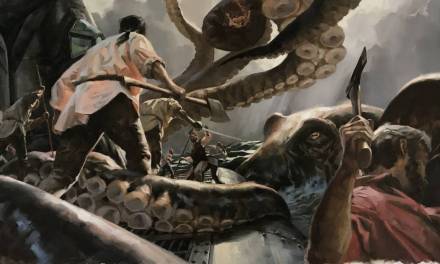
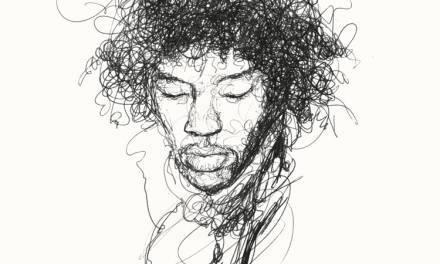

Really love your viewpoint on this Melissa!
Your creatures are delightful! They transport me to an intimate magical land. Thanks for sharing the details of your process.